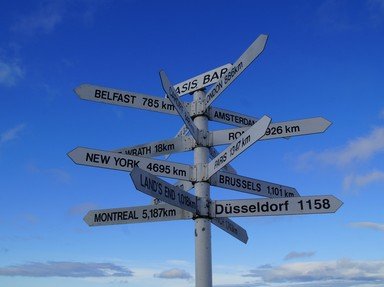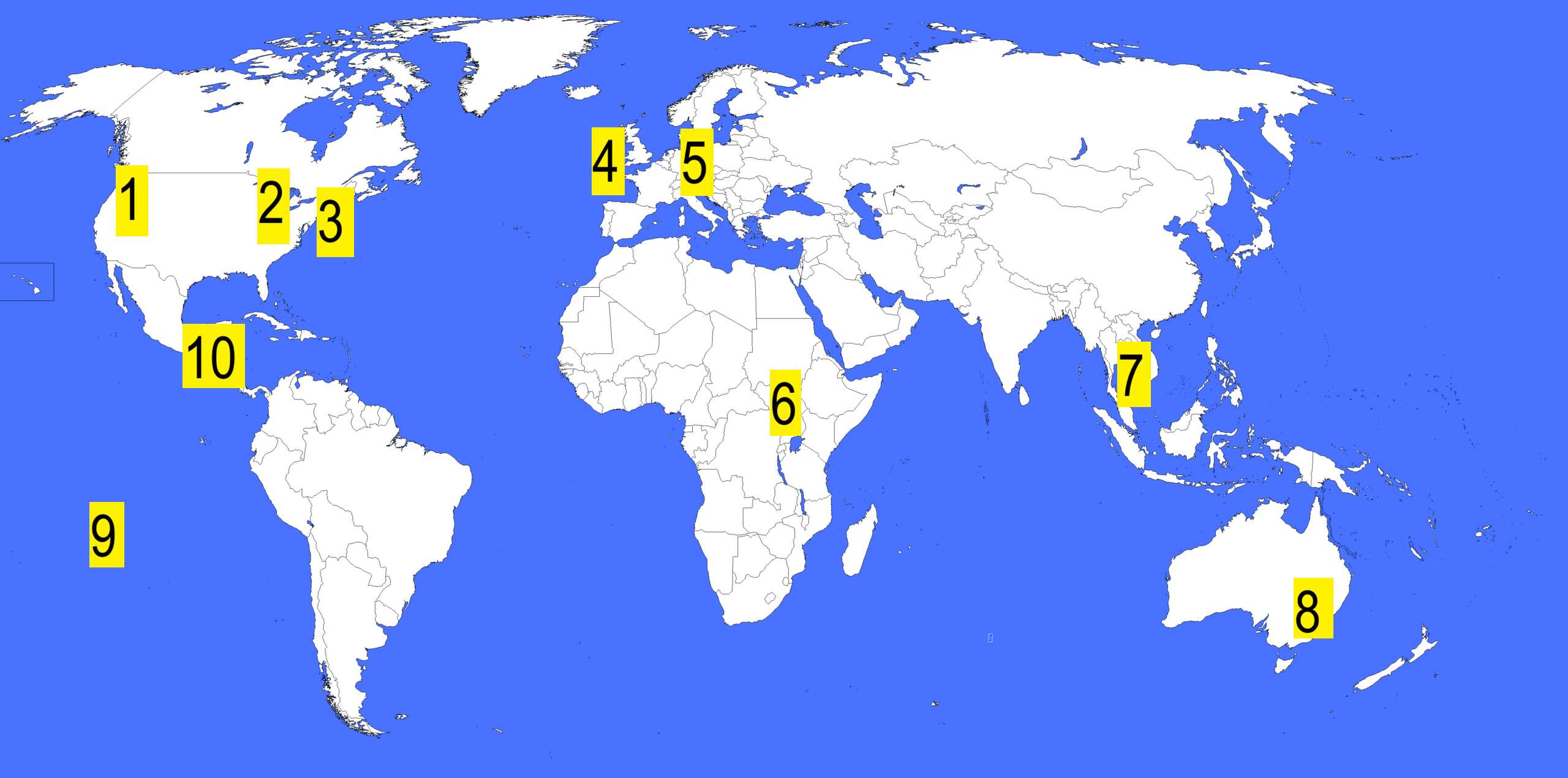
Alliterative Place Names Trivia Quiz
All of these locations have two-word names that begin with the same letter. Can you locate them on this world map?
A label quiz
by looney_tunes.
Estimated time: 3 mins.


| 1. |
| 2. |
| 3. |
| 4. |
| 5. |
| 6. |
| 7. |
| 8. |
| 9. |
| 10. |